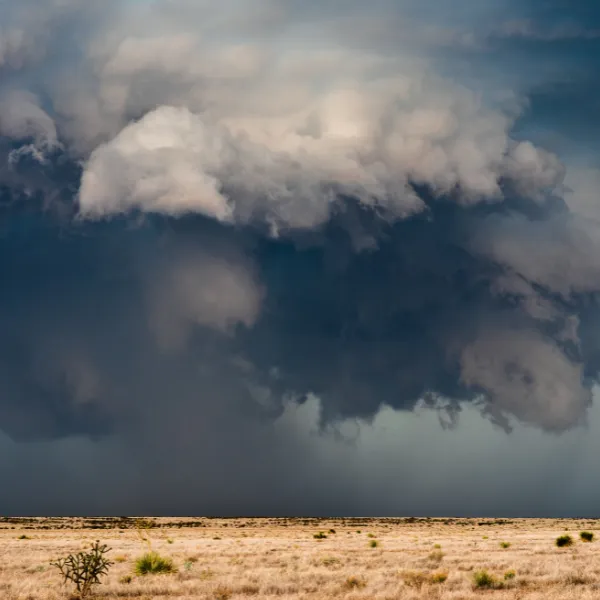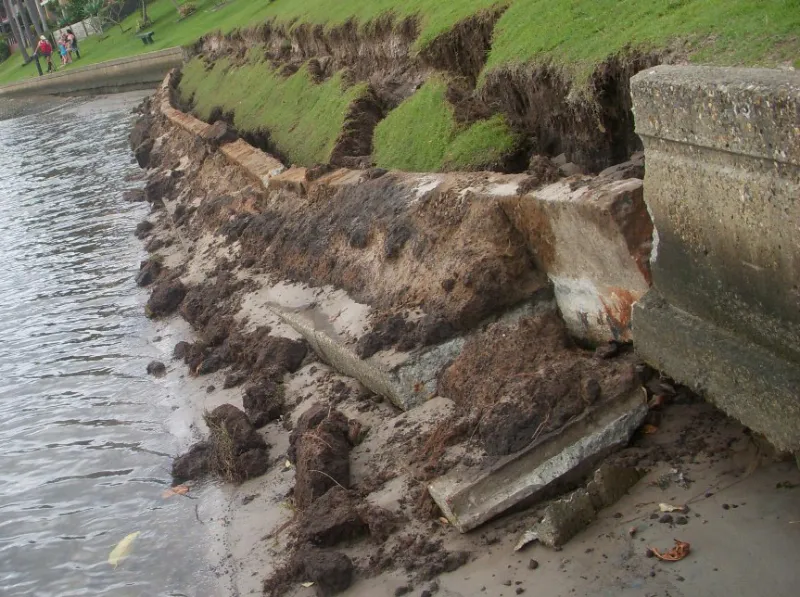How to prepare your waterfront property for storm season
If your canal revetment wall breaks, your property can quickly become at risk of erosion that can erode your home’s foundations, causing irreparable damage to your home. The stress on your revetment wall only increases with heavy rain during storm season. On top of this most councils in Southeast Queensland require the homeowner to ensure their canal revetment wall is in good condition and structurally sound and that all work needed for the wall be paid for and organised by the property owner. This article sets out to better inform you on why canal revetment walls fail and what you can do to ensure your property is protected.

Why Canal Revetment Walls Fail
There are many different causes of canal revetment wall collapses. These can range from age to soil type.
The most common causes are:
- Cracking:
This can be due to age or subsidence behind the wall causing pressure differentials that can warp the wall, causing cracks that over time will create larger subsidence next to the wall as earth washes through the crack, this will greatly increase the chances the wall collapses.
- Joint Deterioration:
Overtime the adhesives and fillers used to seal the joints between prefab concrete slabs on your canal wall can erode, creating cavities between the wall that let water in behind the revetment wall that will erode the earth on the other side of the wall greatly affecting the structural stability of the wall.
- Concrete Spalling:
Occurs when the reinforcing steel rebar in the concrete becomes exposed to salt water and begins rusting and expanding. This leads to the surrounding concrete chipping away. This can be due to poor construction, cracks, age or warping of the slab.
- Weephole Damage:
Weepholes can either become blocked by roots or barnacles, stopping or limiting flow through the weephole. This will increase the weight on one side of the wall and can cause subsidence. The weep hole filter can also be washed out or damaged, letting soil and earth escape through the weep hole, creating subsidence against the wall.
- Poor Drainage or Excessive Rain:
If your home's stormwater drainage system is blocked or not working efficiently, stormwater can build up against the revetment wall. This can cause the wall to lean and eventually collapse as the pressure becomes too great.
These are some of the most common causes of canal revetment wall failures and collapses. Now that you know why and how it can go wrong, what can you do to help ensure your wall is safe during storm season?

What to look for in your canal revetment wall
There are a few things you can check for as a homeowner to ensure your revetment wall is okay and is ready for the stressors of storm season.
- Monitor the soil around your revetment wall:
If you notice a gap beginning to form between the wall and the surrounding soil, this is most likely due to subsidence in the soil. This is often caused by a crack in the wall or a broken weephole letting soil out from behind the wall.
- Check that your stormwater and pool drainage system:
Before storm season it is important to check that your stormwater and pool overflow drainage system is collecting runoff from your roof and property and directing it towards the street stormwater system and not over the revetment wall.
- Check the wall isn't beginning to lean:
Over time, it is important to regularly check the angle of your revetment wall is still standing upright and not beginning to lean.
- Check the toe of the wall isn't being washed away:
The base of the revetment wall is referred to as the toe of the revetment wall. It is typically made up of sand or rocks that are built up against the wall to help protect the base of the wall from being eroded. If the toe is eroded and the base of the canal revetment wall is exposed, it can lead the wall to being eroded from underneath its footing and collapsing.
- Check your weep holes are clear of debris:
This can be done by visually inspecting the weephole to check for roots, and barnacles and ensure the filter is still in the weephole. You should also check for any soil in or around the hole as this may mean that the filter has been damaged and is letting soil from your backyard wash out into the water.
These checks should be done regularly, especially after king tides, heavy rain or storm surges when the revetment wall is put under greater stress. On top of this, it is highly recommended that you have your revetment wall inspected by a canal wall specialist as they can check that the wall is structurally sound and monitor the cracks and other damage year after year to determine whether the wall is being further damaged.
If your revetment wall is showing signs of damage or you require an annual inspection contact our team at Gold Coast Barges and we can help ensure your revetment wall is ready for the stressors of the storm season.